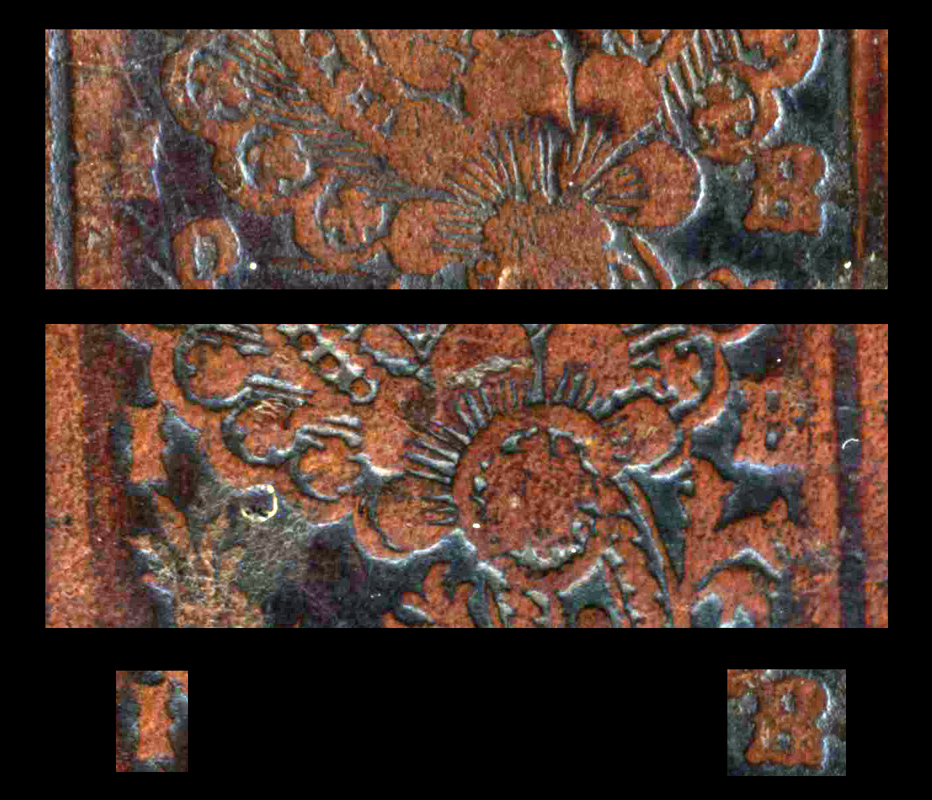

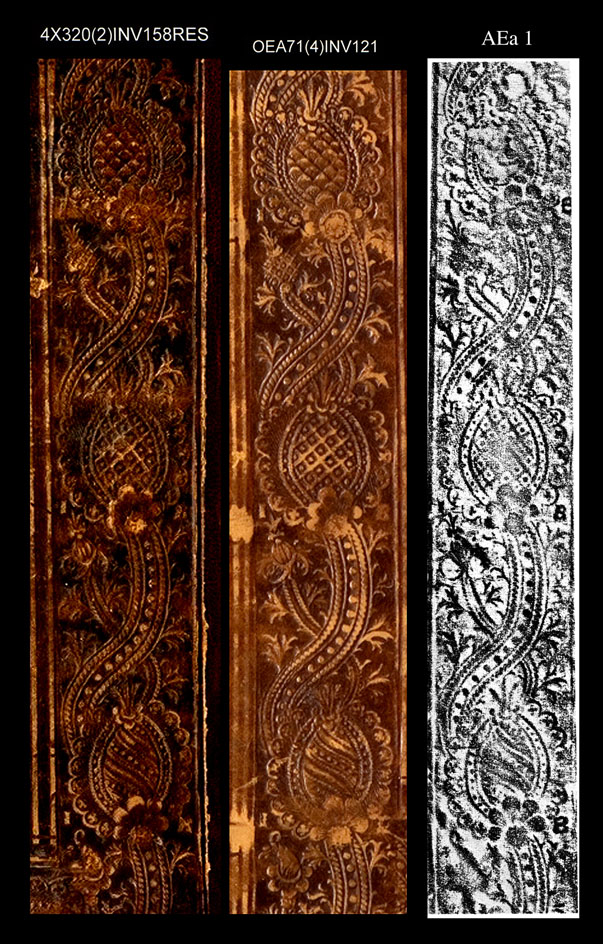
|
We have already explored the fabulous roulette d'ananas entrelacés, on a previous page (click here to see this page). In my search for examples of bindings on which we find this roulette, I found quite a number of this particular model that is signed "I B". Now we are going examine some of these bindings and catalogue the tools used by this particular atelier, in an attempt to possibly identify the person behind the signature "I B". First I want to show you a rubbing shown in Gid's catalogue, number 160. I show it below along with the data that is listed for this binding as well as showing the individual associated tool imprint rubbings from Gid's tomb 2. Below this I show an actual binding found in the Bibliothèque-médiathèque de Nancy, (Rés. 4662). This binding appears to have three of the 4 roulettes found on Gid 160. |
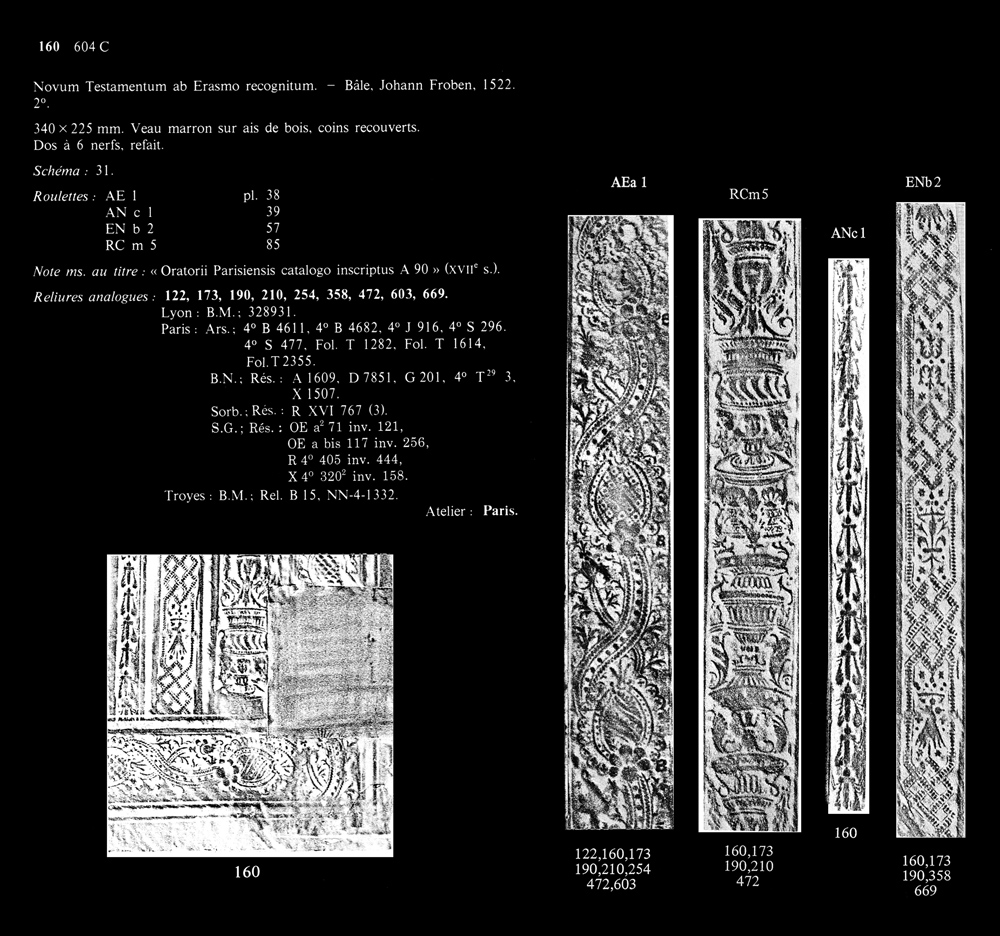
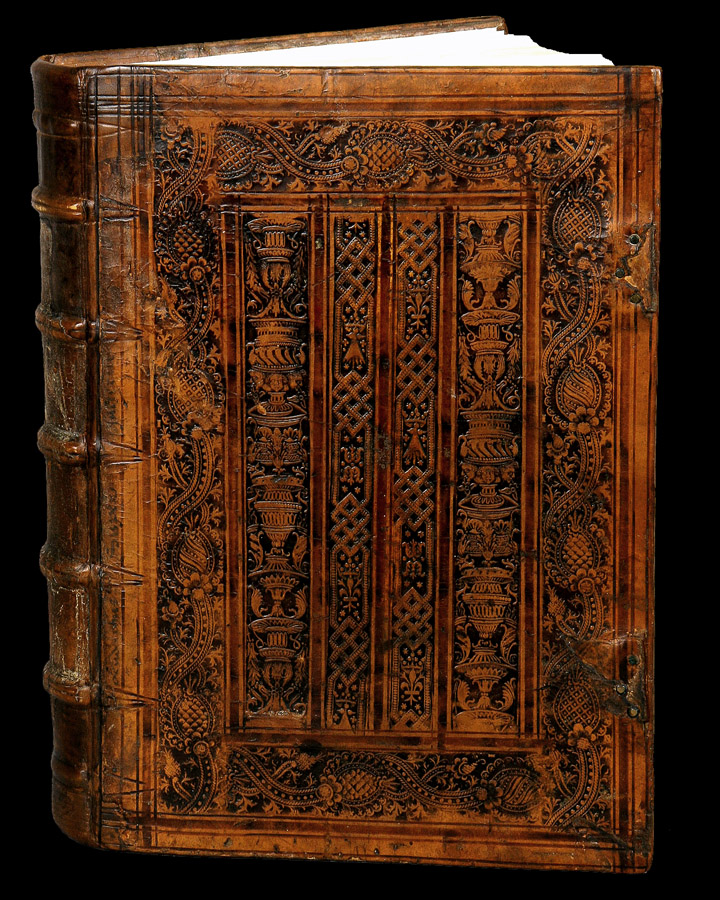
|
Reliure veau brun, décor de vases antiques et ananas
DATE 1506-1600 NOTES Reliure en veau brun, décor de filets droits et motifs estampés à froid. La roulette du premier encadrement forme une très belle frise aux motifs d'ananas entrelacés, de fleurs et de feuillage. Dans le rectangle central, des vases antiques sont superposés dont un remarquable au pied montrant les visages de Mercure tricéphale. Enfin, au centre deux roulettes à fleur de lis alternant avec une moucheture d'hermine couronnée pourrait être une allusion à Louis XII et à Anne de Bretagne. Un motif comparable se retrouve sur la reliure d'un commentaire d'Aristote par Juan de Celaya imprimé à Paris en 1523 (Rés. 4146). COTE Bibliothèque-médiathèque de Nancy, Rés. 4662 DOCUMENT EN RELATION sur : Ludolphe le Chartreux (dit aussi Ludolphe de Saxe) Ludolfi Carthusiensis qui et auctor fuit Vite Christi : in Psalteriu[m] expositio : in qua subiecte reperiuntur materie. Psalmi penite[n]tiales et confessionales elega[n]tes et devoti domini Francisci Petrarche poete laureati... Jacobus Symler Dur lacen. Ad lectorem Parrhisiis : a Claudio Chevallo, circa 1506. , À livres couverts : reliures du Moyen Âge à nos jours [exposition, Nancy, 2007-2008]. Nancy : Bibliothèque municipale, 2007. n. 11. |
|
The bibliotheque's information for this binding is shown above. It is interesting to note the roulette ENb 2 with it's armorial feature (hermine couronnée) is found on Gid 160 that has a printing date of 1522 and also we find that Gid 173, decorated with the same tools as the binding shown above, has a date of 1522. While Gid 190 also made with identical tools is from 1524. All suggesting that this binding (Rés. 4662) was almost certainly made around 1522 to 1524 . (see also the authors note another example of this roulette on a commentaire d'Aristote par Juan de Celaya imprimé à Paris en 1523 (Rés. 4146).Thus the armorial feature (hermine couronnee) of roulette ENb 2 (ENtralacs) may not belong to Anne de Bretagne who died 9 January 1514, but rather, her daughter, Claude de France, wife of Francois Ier. We can see that the Renaissance Vasques roulette RCm 5 is found on at least 5 of Gid's listed bindings that also have the AEa-1 roulette (ananas entrelacés ) these two roulettes are perhaps the most important roulettes of this period. They appear in the I B workshop and were then subsequently copied by many other binders who created dozens of variations of them for decades to come. The chronology of the appearance of these tools is also very important in pinpointing this atelier. I have detailed the Renaissance Vasques roulette on another page (click here to see this page). When I was investigating this roulette I discovered that the design is an exact copy of a decorative panel found in many editions of the Book of Hours from this period. In that research I identified RCm 5 as being closest to the panel in question and thus it may be in fact the first example of this roulette, which I think is quite important here as the AEa 1 roulette may also be the original first model of this tool. Here then is the importance of the atelier I B. it is perhaps the original source of these wonderful roulettes that inspired a huge wave of binding decoration that was to profilerate and evolve for decades afterwards. Similar but not identical roulettes are found on the early bindings of books bearing the Arms of François Ier. These date to aproximately 1518 and so we are forced to suspect that the Atelier I B was using these tools somewhat proir to that date. |
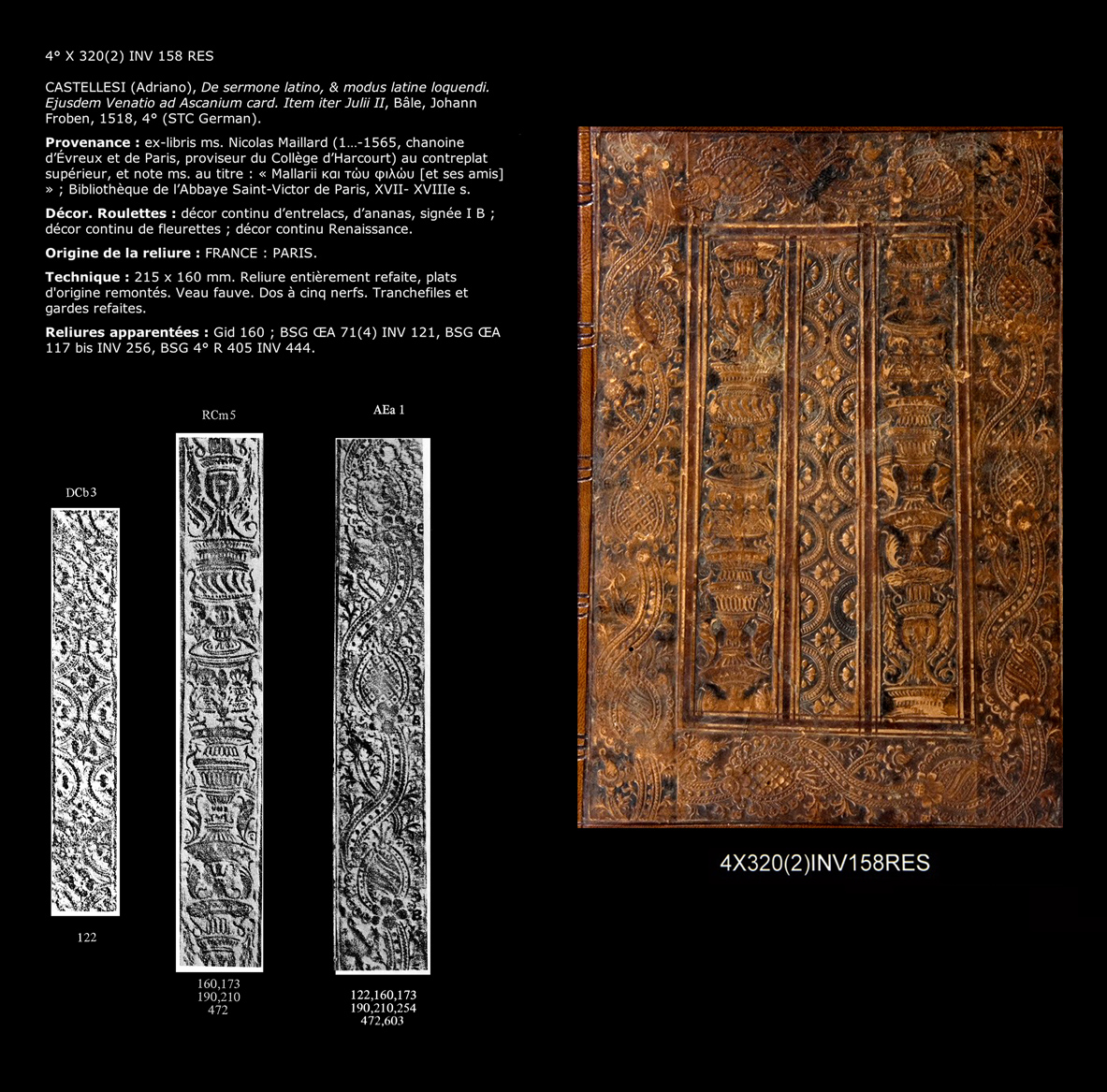
| Above I show a binding from the online collection of the Bliothèque Sainte-Geneviève, here we see only one different roulette and a date of 1518 |
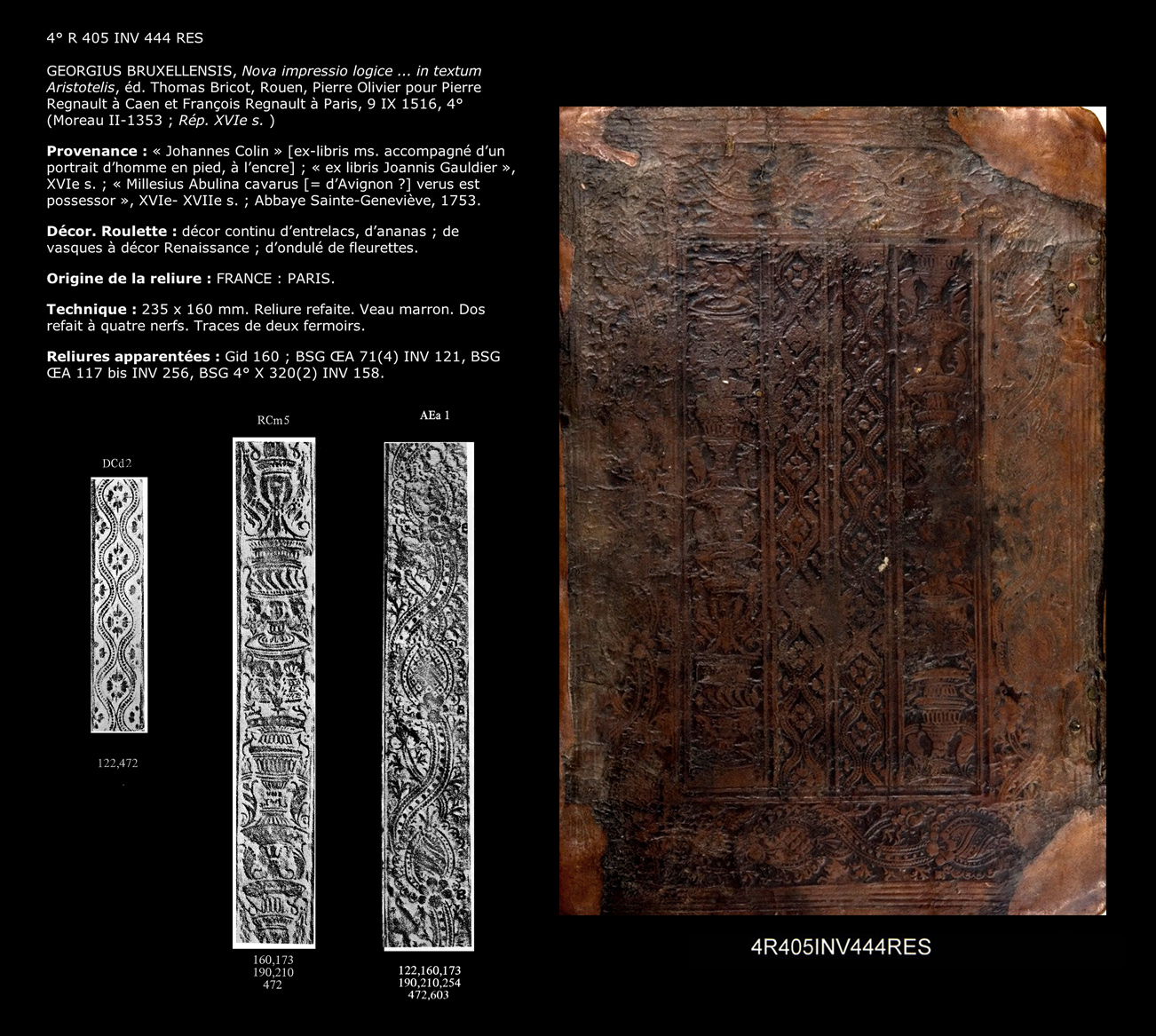
|
Above I show a binding from the online collection at the Bliothèque Sainte-Geneviève
here we see only one different roulette and a date of 1516 |
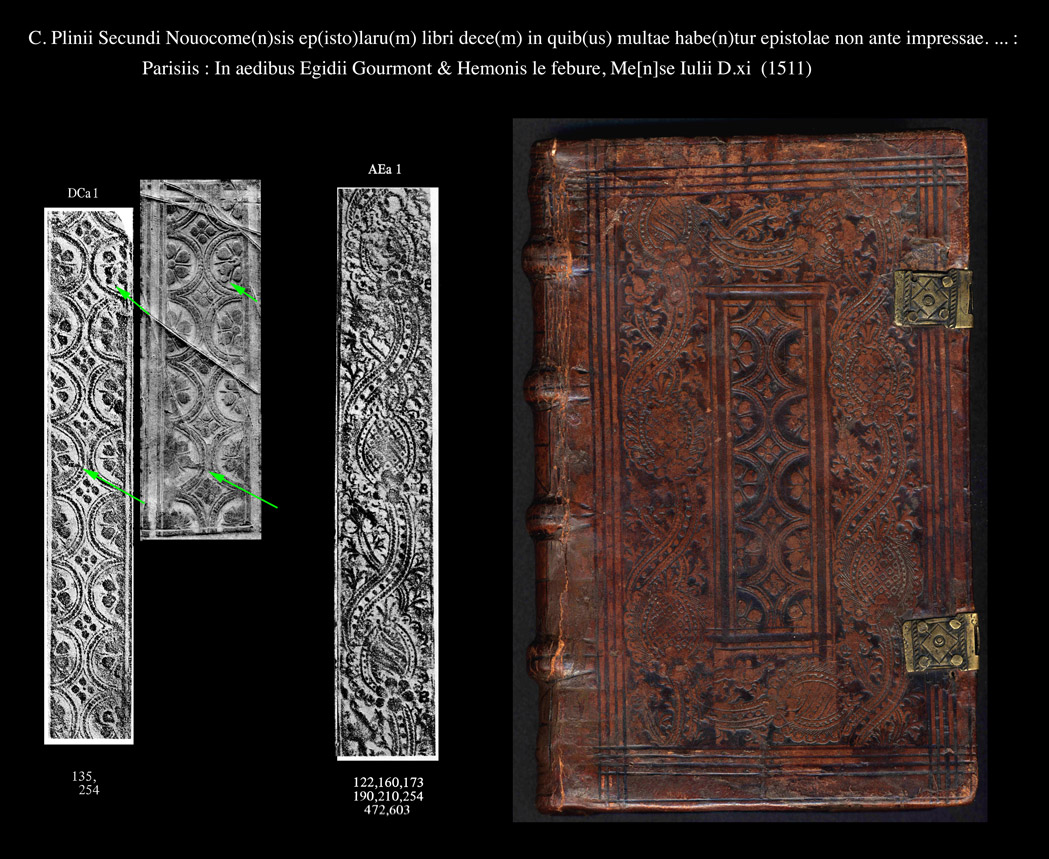
|
The binding shown above was printed by Gilles de Gormont and Hemon Le Fevre in 1511, and possibly bound a few years later around 1515 according to the seller, here we are down to just two roulettes. The same two roulets are found on Gid 254 where we find two editions that date from 1508
|
| click on this link to see the next page: Inventory - example 1 |
| information about the author | return to the home page of VIRTUAL BOOKBINDING |